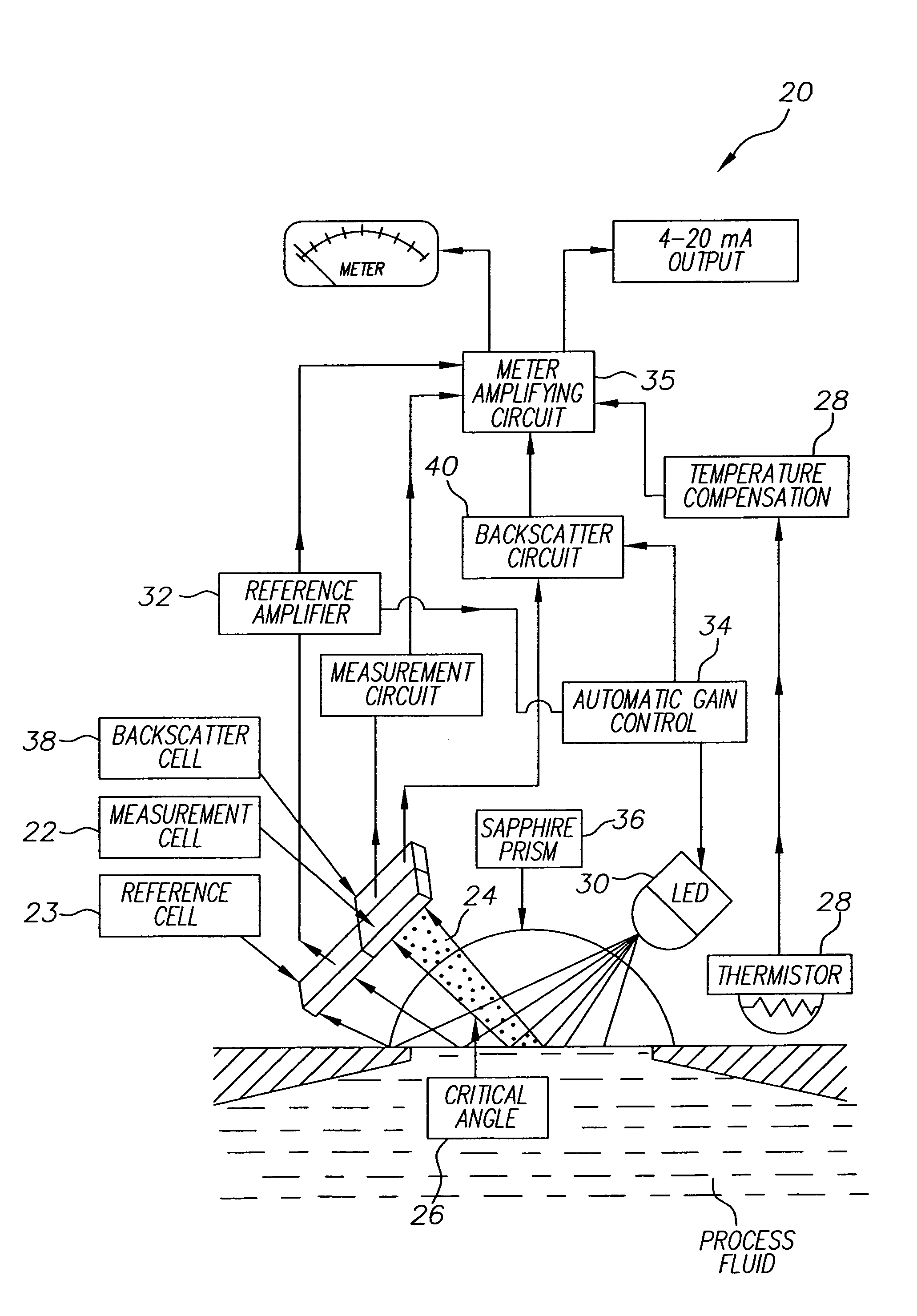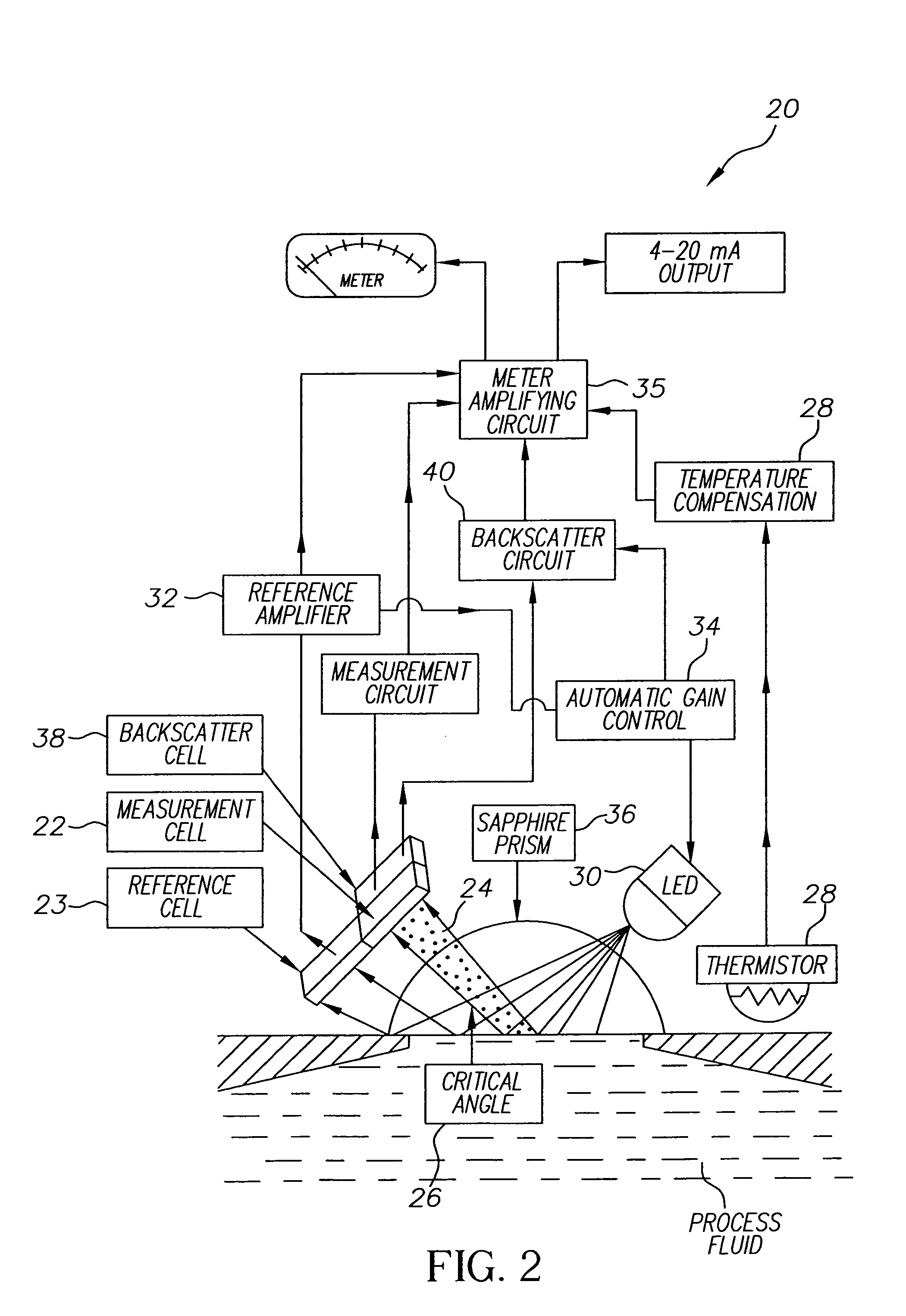System and method for controlling ink concentration using a refractometer
a technology of refractometer and ink concentration, which is applied in the field of control of ink output, can solve the problems of affecting ink properties such as viscosity, system idle condition, and high evaporation rate of carrier fluid, and achieve the effect of accurate dye concentration measuremen
- Summary
- Abstract
- Description
- Claims
- Application Information
AI Technical Summary
Benefits of technology
Problems solved by technology
Method used
Image
Examples
Embodiment Construction
[0017]Referring now to the drawings, in FIG. 1, there is illustrated a prior art view of a drop generator and catcher assembly 10. A drop generator 12 is situated in an area above a catcher 14 and charge plate 16. The printhead defines one or more rows of orifices which receive an electrically conductive recording fluid from a pressurized fluid supply manifold and eject the fluid in rows of parallel streams. Printers using such printheads accomplish graphic reproduction by selectively charging and deflecting the drops in each of the streams and depositing at least some of the drops on a print receiving medium. The uncharged ink droplets flow along a trajectory path indicated by 18 in FIG. 1.
[0018]In continuous ink jet printer operation, printhead life is critical for optimum operation. Proper function of the printhead is dependent on ink properties such as viscosity, surface tension and concentration. These properties affect satellite-free drop formation, drop breakoff phase, catche...
PUM
| Property | Measurement | Unit |
|---|---|---|
| volume | aaaaa | aaaaa |
| volume | aaaaa | aaaaa |
| concentration | aaaaa | aaaaa |
Abstract
Description
Claims
Application Information
 Login to View More
Login to View More - R&D
- Intellectual Property
- Life Sciences
- Materials
- Tech Scout
- Unparalleled Data Quality
- Higher Quality Content
- 60% Fewer Hallucinations
Browse by: Latest US Patents, China's latest patents, Technical Efficacy Thesaurus, Application Domain, Technology Topic, Popular Technical Reports.
© 2025 PatSnap. All rights reserved.Legal|Privacy policy|Modern Slavery Act Transparency Statement|Sitemap|About US| Contact US: help@patsnap.com



